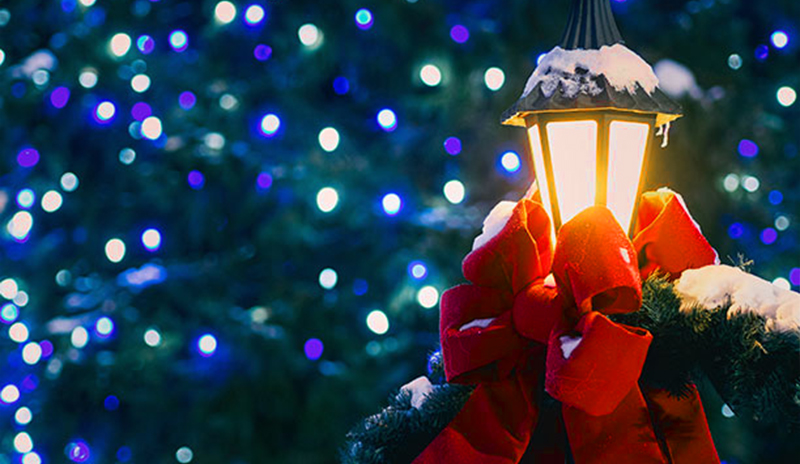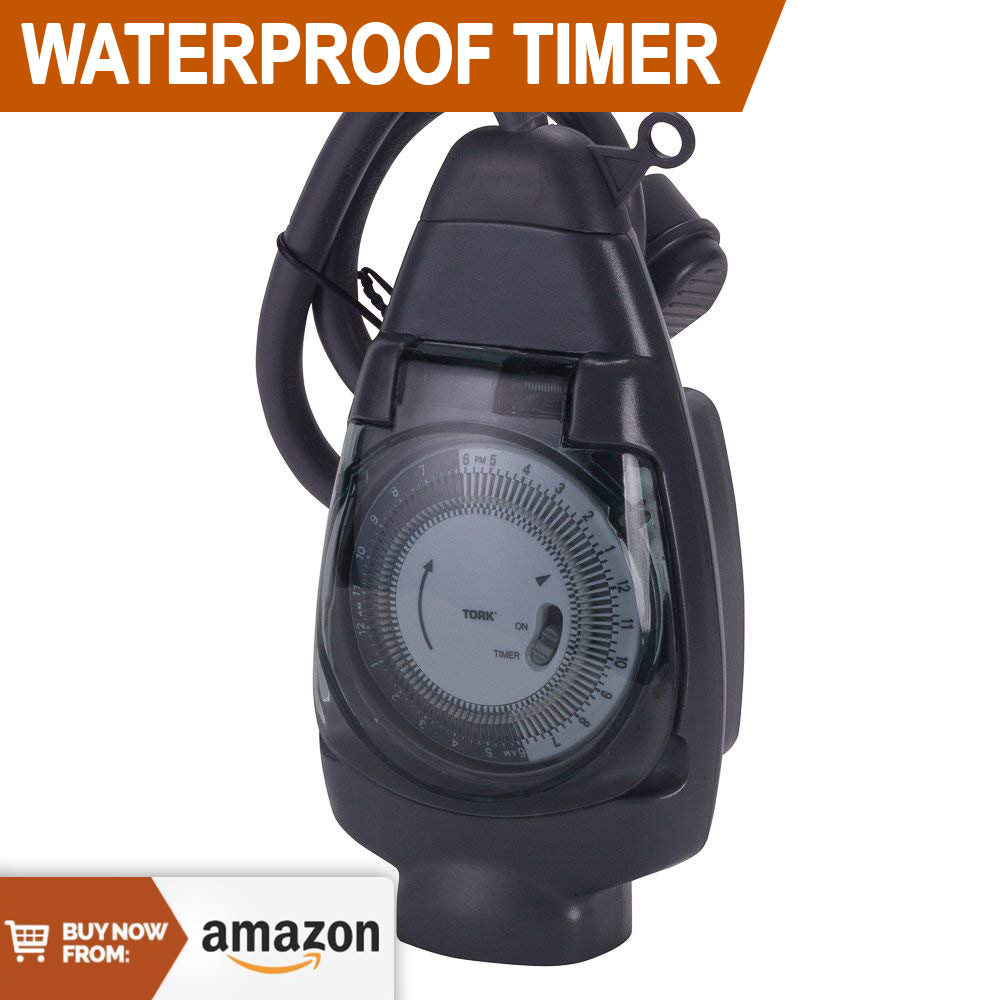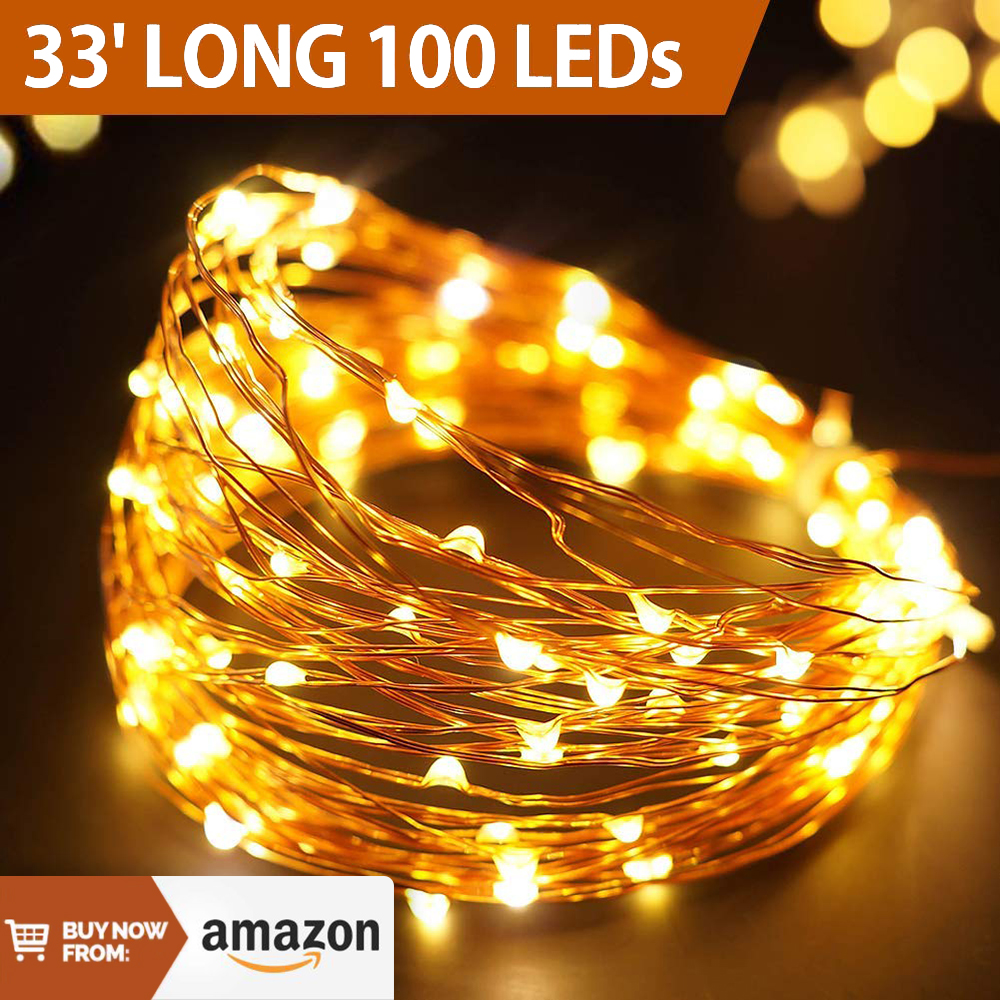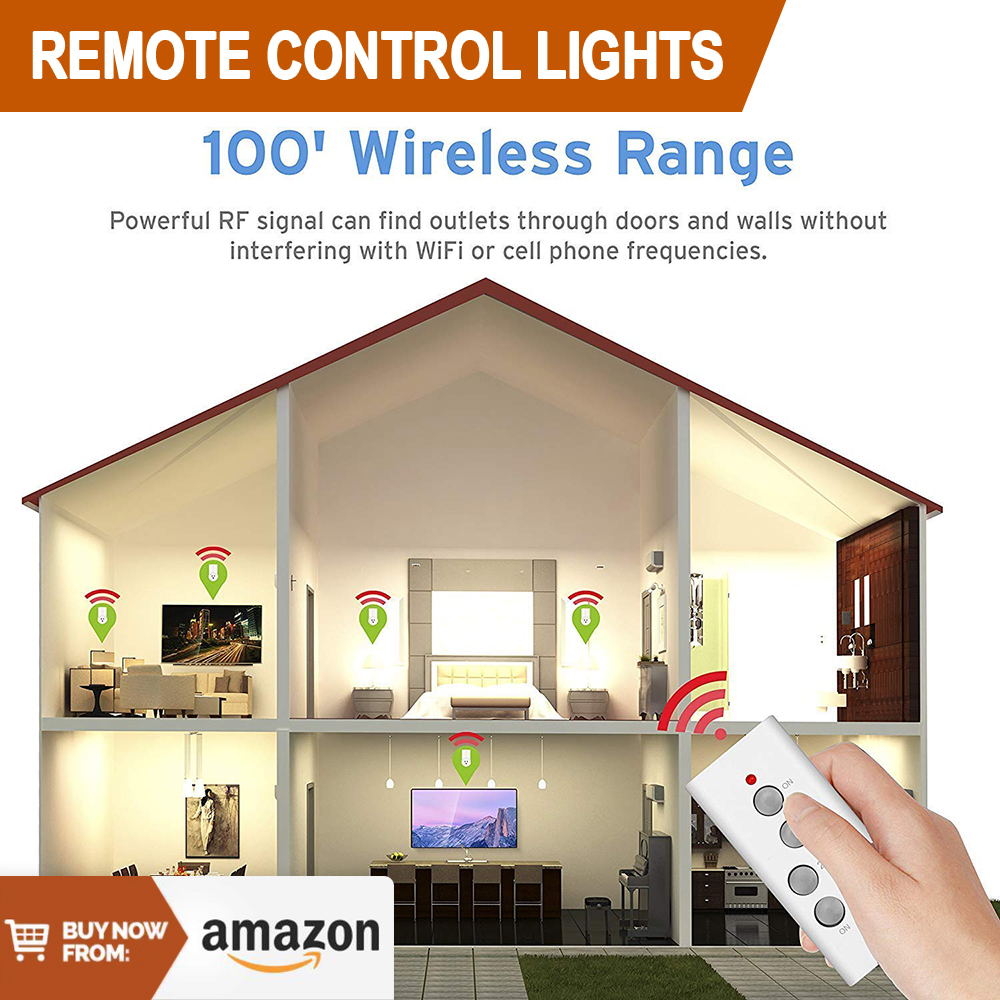How much does it cost to run your Christmas lights this holiday season? You might be surprised! Below is an easy Christmas lights calculator you can use to quickly calculate your energy cost.
It’s that time of the year again, time to pull out your boxes of Christmas lights and Christmas decorations. Maybe you want to get a nice Christmas tree, too. Of course, you need lights for those too. Don’t forget your banisters (if you have any), and some lights around those definitely increase the pleasant vibe of Christmas. Then there is your porch, and if you like to get really festive, all the way around your house, too.
Popular: Christmas Lights Calculator
Top 5 Ways To Save On Christmas Lights This Year
Christmas Lights Cost Formula
Christmas lights really set the mood of the holidays, along with perhaps some apple cider, eggnog, and the smell of apple cinnamon candles to create the perfect peaceful holiday atmosphere. Maybe you will play some music too; maybe you’ll play epic Christmas songs from the past, or maybe you’re into the latest holiday singles from your favorite music artist. Combine this with some cinnamon rolls and apple pie and you’ll be set.
How much does all this Christmas cheer cost you, though? While Christmas lights aren’t very expensive if you know where to shop, if you run a lot of lights then the cost might add up. How much, you ask? It really does depend on your cost per kWh (kilowatt-hour) that you find on your electric bill. However, even without that we can make some general estimates.
Different states have varying kWh rates, from 9 cents per kWh for Louisiana and Washington state, to up to 20 cents per kWh for California and Massachusetts (no surprise there), to even 32 cents per kWh for Hawaii, which is the highest. This means it will cost you almost quadruple in Hawaii to run the same Christmas lights as in Washington state, or nearly triple the national average of 13 cents per kWh.
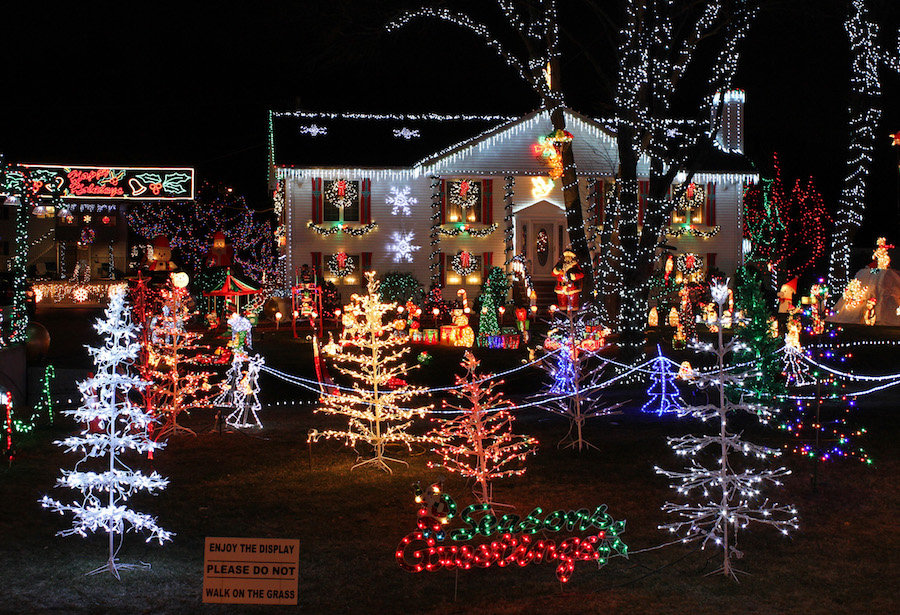 This Christmas display in Hawaii costs quite a lot each month!
This Christmas display in Hawaii costs quite a lot each month!What does this add up to, though, out of your pocket each month? Let’s take a generous average of $0.15 per kWh. A set of standard mini lights string of 100 includes 100x 0.45 watt mini bulbs, so this adds up to 0.045 kW (kilowatts). We will do an estimate based off a single string of 100 mini lights, so you can multiply the total by how many strings of 100 you have (the most popular Christmas string length).
Next, let’s say that you don’t run your lights during the day, which would be silly, but only about 12 hours per day. By the way, if you don’t want to forget to turn off your lights every day, try one of these automated timers which will automatically switch on and off your lights at the correct time every day! Here is a great Waterproof Christmas Lights Timer. It could save you a lot of money this holiday season.
Ok, so now we know a couple things. One standard mini bulbs string of 100 mini lights uses 0.045 kW. We’re estimating your average cost per kWh to be around the national average, so $0.15 per kWh. And we are going to say that you are running your lights just 12 hours per day. For ease of calculation, let’s calculate based on a 30 day month.
(Skip to the formula if you’re interested, otherwise just plug these numbers into the calculator below!)
Christmas Lights Calculator
Top 5 Ways To Save On Christmas Lights This Year
Christmas Lights Cost Formula

Christmas Lights Calculator
Can’t be bothered to do the math in the formulas at the end of this page? Don’t worry! We built you a quick calculator that will automatically tell you. Just fill in the fields below and it will automatically update with your monthly cost!
| Number of Mini Light Bulbs (0.45w per bulb) | |
| Number of C7 bulbs (5w per bulb) | |
| Number of C9 bulbs (7w per bulb) | |
| Number of 150 mini light net lights | |
| Number of LED light sets (2w per set) | |
| Number of LED light bulbs (0.65w per bulb) | |
| Total kW | |
| Your electricity cost per kWh (Default: $0.15) | |
| # Hours lights are on per day (Default: 12) | |
| # Days lights are on per month (Default: 30) | |
| Total cost per hour | |
| Total cost per day | |
| Total cost per week | |
| Total cost per month |
Christmas Lights Calculator
Top 5 Ways To Save On Christmas Lights This Year
Christmas Lights Cost Formula
How can you save money on Christmas lights this holiday season?
5 Put them on a timer to automate it
This is a wonderful solution to save money. For example, if you know you aren't going to be going outside to unplug the lights because it's too cold out, or you are too busy, or you sill simply forget, then by using a timer you could save 50% or even 75% on your electric costs versus running the lights 24 hours per day.
For example, if without a timer you would end up leaving then on 24/7, then besides even burning out the strings faster so you would need to replace next year, you are paying a lot more money in electricity by running them 24 hours per day. On average you will pay up to $2.50 to $3.75 per month extra - per string of lights! If you have 20 strings, then this means you might be wasting upwards of $150 for the holiday season in unnecessary electric costs.
This really makes a $15 or $30 automated timer really seem worth it when you realize it would cost you over $100 more NOT to get the timer. Here is a great waterproof Christmas light timer which works automatically. Waterproof is important because it's safe in the rain or snow!
You can choose how long you want your christmas lights to be on. Maybe you want it the whole night! So, 12 hours, maybe from 6pm to 6am so 100% of your neighbors will see your beautiful lights. This will save you 50% on your Christmas lights electric costs versus running your lights for 24 hours per day.
Or, maybe you want to get the most bang for your buck, so maybe you only want to run during the evening when 99% of your neighbors would ever see it. This means maybe between 6pm and 12pm. By midnight, most of your neighbors won't even see your lights because they will be sleeping, so you can save 75% off your electric cost by only running your lights for 6 hours per day.
One more important reason to get a timer is so that neighbors and perhaps villains don't think you're not home. You wouldn't want to leave your lights on 24/7 if you went away on holiday, but by putting your Christmas lights on a timer, it could make it look like someone's home. That nefarious holiday grinch might just overlook your house if your Christmas lights are on, thinking that maybe you're home.
4 Use LED Christmas lights
This one depends on your preference. It also depends on the quality of your LED lights. Personally, I can't stand the LED flickering or the harsh white of some cheap LED lights (the cheap $9 LED strings at walmart come to mind). However, if you shop around and choose some quality LED lights, you could possibly avoid both of these problems.
Additionally, you also need to consider that quality LED strings will cost more. On the other hand, LED will not go out as often, you usually won't have to work about a couple years down the line trying to find that *one* bulb that is shorting out half the line.
Then again, standard mini-bulb strings are so cheap anyway that you could buy new ones every year or two and still pay less than you paid for even the cheapest LED strings. On the other hand, a good quality LED set could last you many years - eventually surpassing the standard mini-bulb strings in affordability.
Personally, I will always like the standard (incandescent) mini-bulbs better because they feel warmer and more pleasing. But maybe you'll really like some LED lights. If so, you can save a lot of money on electric costs. Here are some better quality LED lights that you might like better.
3 Shorten your lights season
Instead of putting your lights up in mid-November and taking them down in mid-January, you could consider putting them up a couple days into December and then taking them down a couple days into January. By doing so, you can save up to 50% on your electric costs by running them in half the time, but still have them up for most of the holiday season.
Don't be too tightwad though by only putting them up for a week or two. In my opinion you need at least a month to a month and a half to be worth it. Not to mention that you keep the warm holiday feelings for longer! Instead, you can follow some of the other tricks listed here to save money while still not breaking the bank.
2 Run less strings of Christmas lights
Of course, the simplest solution is to simply run less Christmas lights. You can achieve this by literally just running less, or perhaps you could be more strategic about your Christmas lights purchases.
For example, instead of getting 4 sets of 500 lights, you could get only two 500-lights strings and then get 5 sets of 100 lights which you can place around different places for a similar effect without noticing a decrease of lights.
This means you would actually only use 1,500 lights instead of 2,000 lights, so you can save 25% on your electric costs! Be creative about placement and you might be able to get away with less lights for the same effect.
1 Easily turn off with a remote control
If you're like me, you don't want to think about turning off the Christmas lights when you go on vacation or just because it's cold outside. Instead, my favorite thing to do it put all my lights on a remote control so I can easily turn them off without any hassle.
Even better, remote controls for Christmas lights can have multiple buttons so you can turn off just one, a couple, or all of them. This is another way to save a lot of money because say that instead of turning off all your lights so that you are the dark house in the neighborhood, instead you just turned off some or even half of them after a certain hour, but kept some lit up so you aren't a holiday buzzkill.
Here is a great quality Christmas light remote control to make your life a little easier and save you some money too:
Christmas Lights Calculator
Top 5 Ways To Save On Christmas Lights This Year
Christmas Lights Cost Formula
Here is the easy formula:
[Total kW used] x [cost per kWh] x [hours per day running] x [days per month]
= Cost per month
It may sound like a lot, but it’s quite easy. Just plug in the variables.
Total kW used = T = 0.045
Cost per kWh = C = $0.15
Hours per day = H = 12
Days/month = D = 30
Now just multiply it all together and you get your monthly cost.
T x C x H x D = 0.045 x 0.15 x 12 x 30 = $2.43
This means that each month, 1 string of 100 mini-lights costs you $2.43 if you run it 12 hours per day.
If you have, say, 20 strings of 100 lights, then your total cost would be:
$2.43 x 20 = $48.60
Those costs really add up! On top of the cost of the lights themselves, you’re also spending around $100 more to run 10 strings of 100 mini lights for 2 months only 12 hours per day.
What if you’re in Hawaii? The cost is much more!
Total kW used = T = 0.045
Cost per kWh = C = $0.32
Hours per day = H = 12
Days/month = D = 30
T x C x H x D = 0.045 x 0.15 x 12 x 30 = $5.184
This means it costs $5.18 per month per 100 bulb string in Hawaii.
Your total amount to run the same lights in Hawaii is beginning to get quite expensive. You’d be looking at over $100 per month to run the same 20 strings of 100 mini lights for the holiday season – that’s $200 if you keep them up for 2 months! Worse, if you actually decide to run them 24/7 then the cost would be $400!
Don’t get too scared though, unless you are living in Hawaii. You can decrease your costs for running Christmas lights using the ways above so you can save a lot of money this year.
Christmas Lights Calculator
Top 5 Ways To Save On Christmas Lights This Year
Christmas Lights Cost Formula
Do you have a secret that you use to save money on Christmas lights? Let us know!

